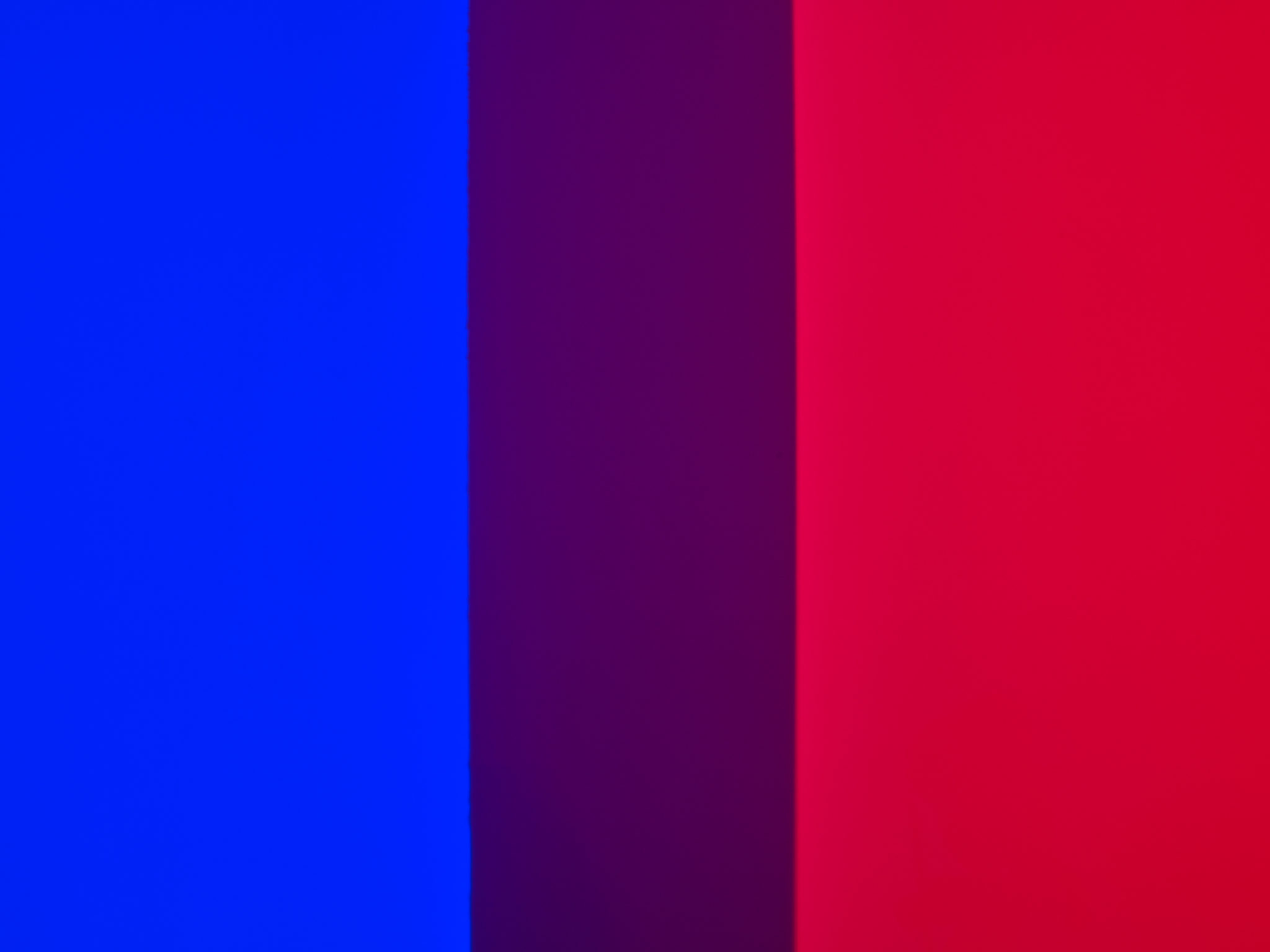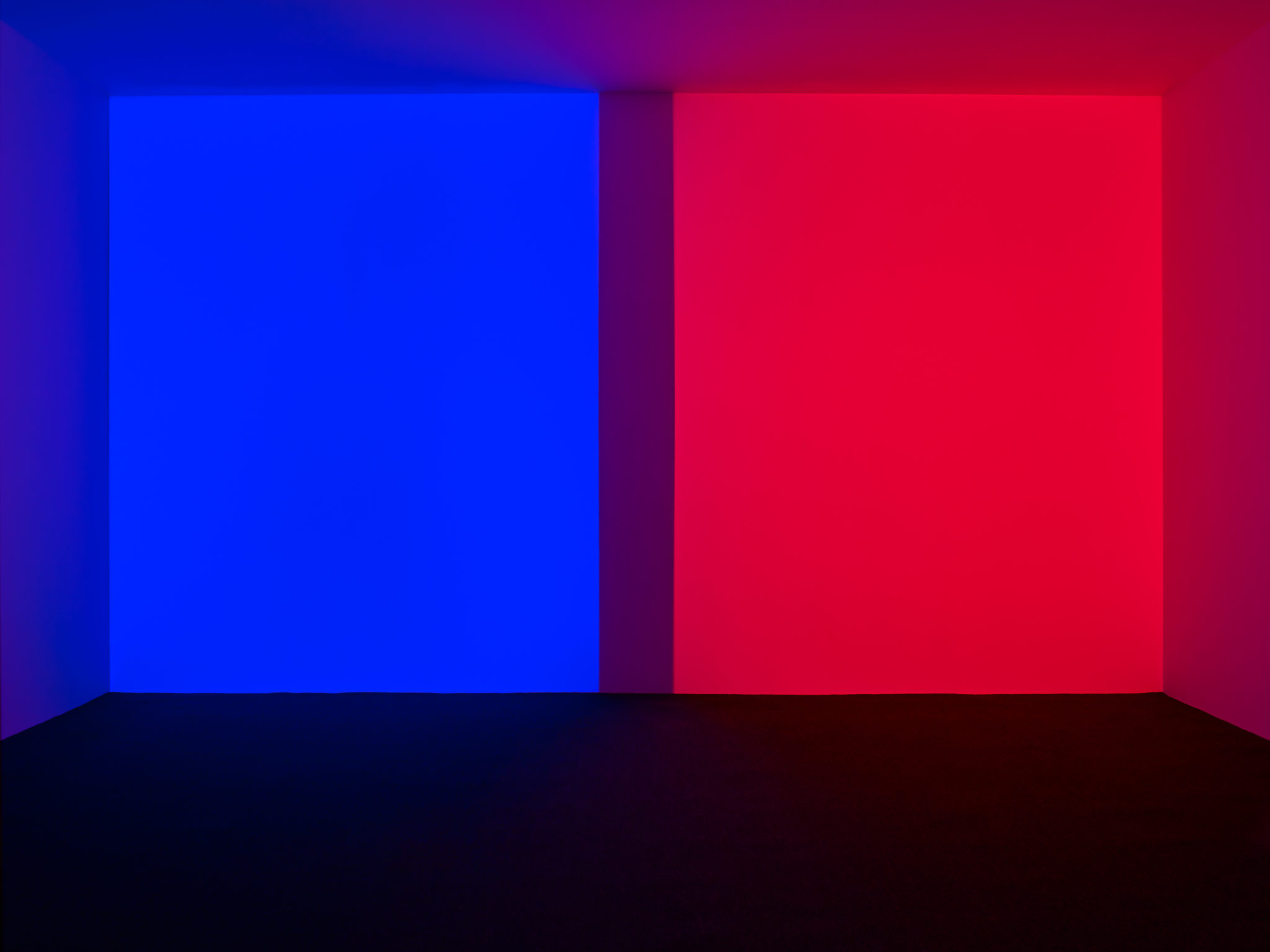James Turrell
Orca, Blue-Red, 1969
MRI wire projector (double projection)
Installation dimensions variable
© James Turrell
Photo: Stephen White
We have long used light to reveal things
But it is in the thing-ness of light
That light itself becomes the revelation.
—James Turrell
Orca, Blue-Red (1969) is an early example of James Turrell’s groundbreaking Projection Piece series. The room-spanning installation comprises two beams of vivid light—one blue, one red—that are projected such that the areas of light do not meet. Between them is a narrow band of shadow that produces an uncanny effect of negative space. The disjuncture between the unlit passage and the opposing colors creates a perceptual illusion that challenges the very solidity of the room’s architecture. Turrell refers to this area of light as “the sensing space”—foregrounding the role of the viewer in order to understand both the instrument of sight and the limits and possibilities of individual perception. As he describes it, “I want you to sense yourself sensing. To see yourself seeing. To be aware of how you are forming the reality you see.” Turrell’s project is anti-illusory, in that he gives material form to the immaterial, highlighting the inherent “thing-ness of light.”
Within Turrell’s series of Projection Pieces, a total of four versions of Orca exist in blue, red, and white, with the present work being the only one to combine two colors. Orca (White) (1968) is in the collection of the National Gallery of Art (Washington, DC). Another double projection titled Tycho (White) (1968) is in the collection of the Museum of Fine Arts, Houston.




